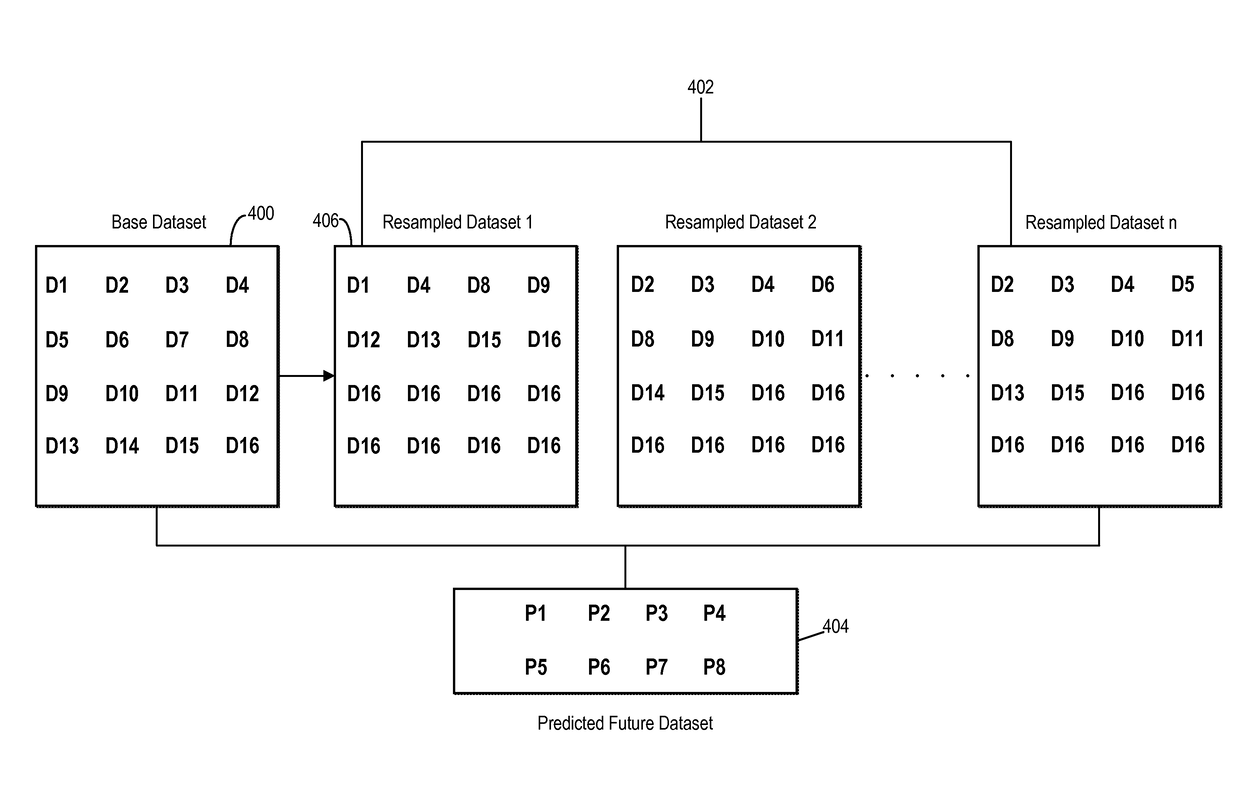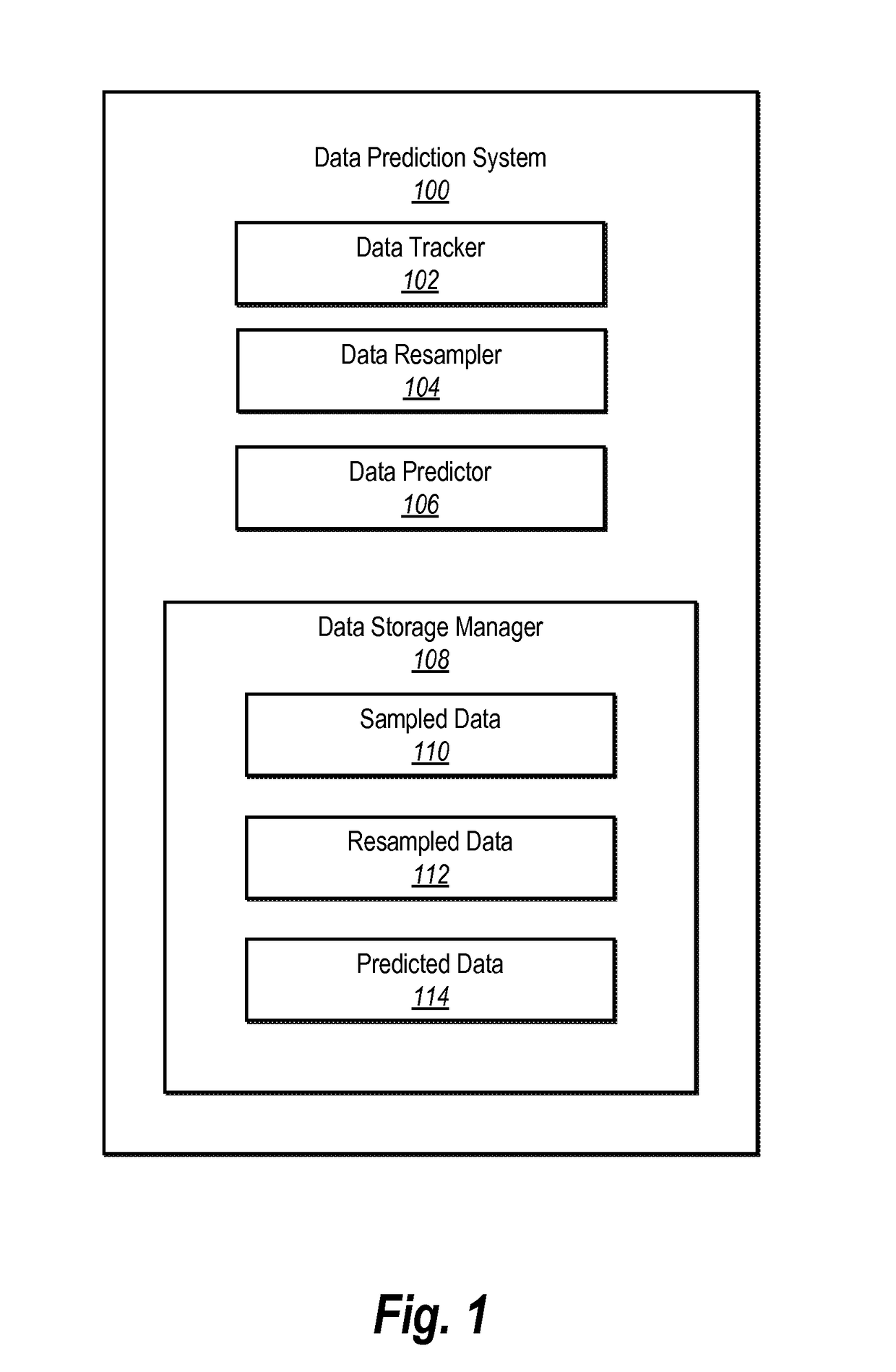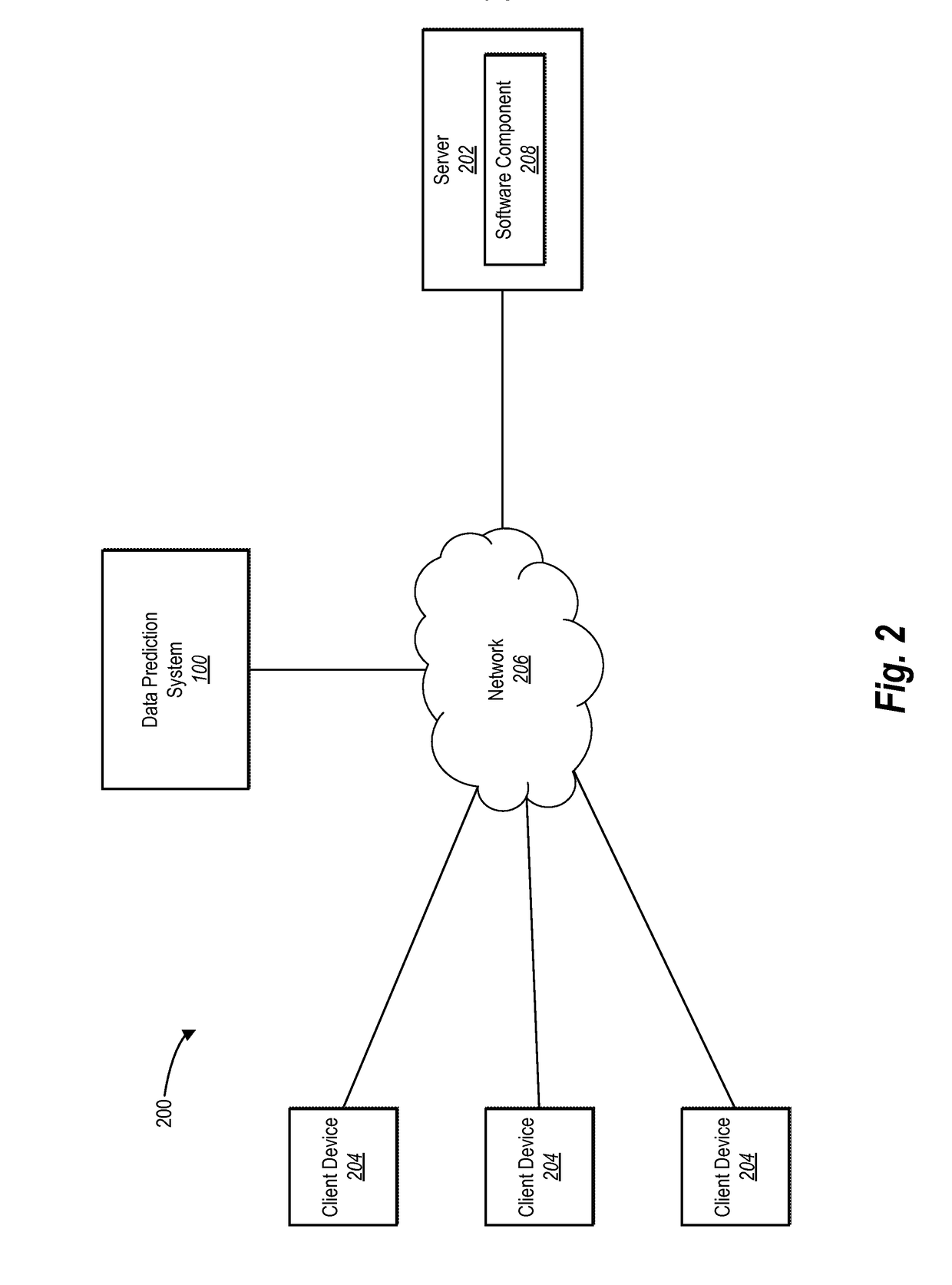Performing predictive analysis on usage analytics
a predictive analysis and analytics technology, applied in the field of systems and methods for predictive analysis, can solve problems such as inaccurate or otherwise unsatisfactory predictions, inability to produce accurate predictive analyses, and inability to access available analytics data or contain enough data points to achieve accurate predictive analyses
- Summary
- Abstract
- Description
- Claims
- Application Information
AI Technical Summary
Benefits of technology
Problems solved by technology
Method used
Image
Examples
Embodiment Construction
[0023]One or more embodiments include a data prediction system that predicts future data points from a base dataset. In particular, the data prediction system can predict future data by randomly generating resampled data that at least partially maintains one or more time dependent characteristics of the base dataset. For example, the data prediction system can use a modified resampling process that maintains a time order of resampled data points. The data prediction system can then use the resampled data sets to predict a future dataset using a time series algorithm.
[0024]In particular, the data prediction system can predict data for a website based on collected analytics data corresponding to previous user interactions with the website. The data prediction system can maintain at least some time characteristics associated with the base dataset to provide informed predictions of future user visits and / or interactions corresponding to the website. One can appreciate that while the dat...
PUM
 Login to View More
Login to View More Abstract
Description
Claims
Application Information
 Login to View More
Login to View More - R&D
- Intellectual Property
- Life Sciences
- Materials
- Tech Scout
- Unparalleled Data Quality
- Higher Quality Content
- 60% Fewer Hallucinations
Browse by: Latest US Patents, China's latest patents, Technical Efficacy Thesaurus, Application Domain, Technology Topic, Popular Technical Reports.
© 2025 PatSnap. All rights reserved.Legal|Privacy policy|Modern Slavery Act Transparency Statement|Sitemap|About US| Contact US: help@patsnap.com



